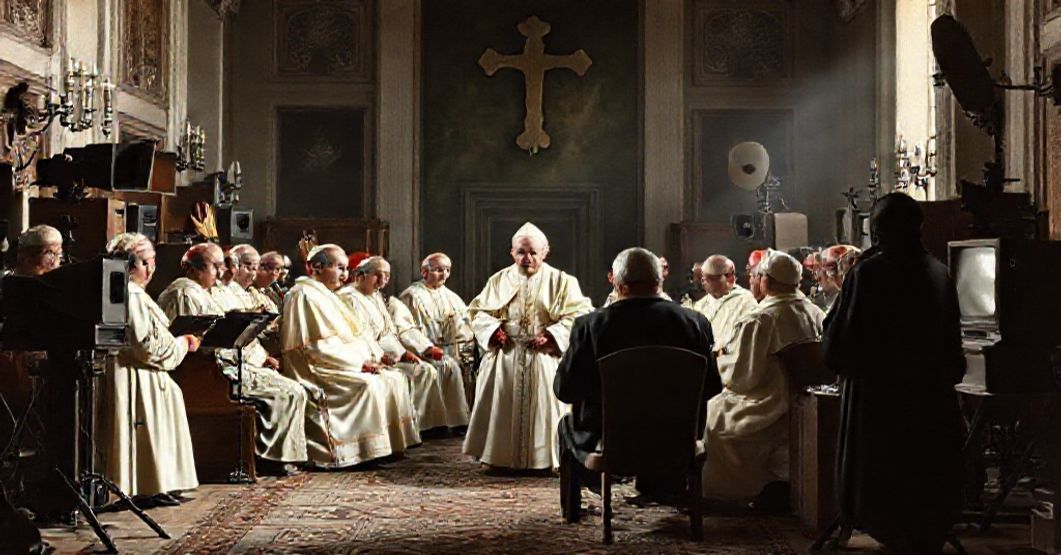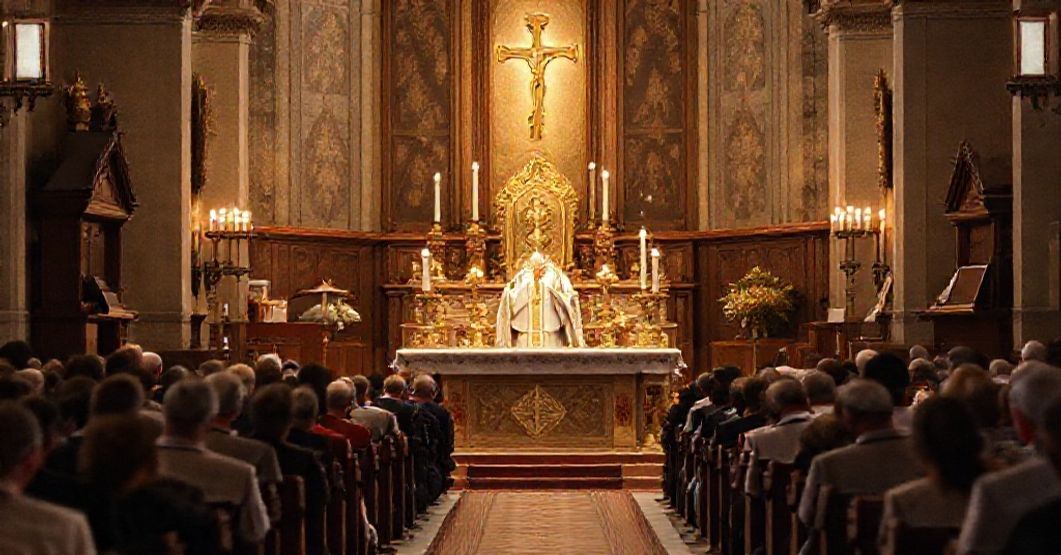Antipopes of the Antichurch



















Timeline of this heretical pontiff
Encyclical Letters
+ 15 posts1959
+ 7 posts1961
+ 4 posts1962
+ 2 posts1963
+ 2 postsApostolic Exhortations
+ 3 postsApostolic Constitutions
+ 93 posts1958
+ 6 posts1959
+ 87 postsMotu Proprio
+ 15 posts1958
+ 1 posts1959
+ 1 posts1962
+ 11 postsApostolic Letters
+ 151 posts1958
+ 4 posts1959
+ 63 posts1960
+ 78 posts1961
+ 1 posts1962
+ 4 posts1963
+ 1 postsSpeeches
+ 99 posts1958
+ 2 posts1959
+ 26 posts1960
+ 29 posts1961
+ 16 posts1962
+ 24 postsMessages
+ 6 posts1959
+ 4 postsHomilies
+ 4 postsLetters
+ 152 posts1958
+ 1 posts1959
+ 48 posts1960
+ 32 posts1961
+ 31 posts1962
+ 30 posts1963
+ 10 postsNot categorized
+ 1 posts1958
+ 1 postsNews feed


Divini pastoris (1958.11.12)
John XXIII’s motu proprio “Divini pastoris,” dated 12 November 1958, is a brief decree in which the newly elected claimant, styling himself “Ioannes PP. XXIII,” grants to the ecclesiastics who served in the recent conclave (officials and conclavists accompanying the cardinals) two main favors: first, the privilege of a portable altar (altar portatile) under canon 822 §3 of the 1917 Code, with some restrictions (not on major feasts or other days excluded by the local Ordinary); second, a one-time free reception of apostolic letters and provisions for any benefices granted to them. The text is framed as an act of paternal benevolence of the “Divine Pastor” newly raised to the “throne of the Supreme Pontificate,” rewarding conclave clerics with spiritual and juridical privileges in recognition of their service.


Boni Pastoris (1959.02.22)
The text under consideration is the motu proprio “Boni Pastoris” of John XXIII (22 February 1959), which reorganizes and strengthens the so-called Pontifical Commission for Cinematography, Radio, and Television, presenting modern audio-visual media as privileged instruments for forming consciences, promoting “culture,” coordinating national Catholic offices, and centralizing all these activities under a Roman structure aligned with Pius XII’s “Miranda prorsus.” It solemnly grants this body curial status, broad competencies, and a program of systematic engagement with cinema, radio, and television as normal and even exemplary means of apostolate.


CUM INDE (1959.05.17)
The document “Cum inde,” issued motu proprio by John XXIII on 17 May 1959, elevates the Pontifical Lateran Athenaeum to the title and status of the “Pontifical Lateran University.” It rehearses John XXIII’s sentimental connection with the institution, praises its past services in forming clergy, lists its faculties and institutes (theology, philosophy, canon law, pastoral studies, “Jesus Magister”), cites Pius XI’s apostolic constitution “Deus scientiarum Dominus” as the juridical framework, and decrees that, in continuity with prior papal initiatives, this Roman center of higher studies should enjoy the dignity, name, and recognition of a “university” among analogous institutions in the world. It presents this as a gesture of benevolence toward sacred studies, of support for Roman ecclesiastical science, and as a means to increase its international prestige. In reality, this apparently innocuous juridical act is a programmatic step in subordinating priestly formation and sacred doctrine to the categories, standards, and ambitions of the modern world and its academic idolatries.


Rubricarum instructum (1960.07.25)
Ioannes Roncalli’s motu proprio Rubricarum instructum (25 July 1960) announces and promulgates a “new corpus” of rubrics for the Roman Breviary and Missal, replacing the existing rubricial structure (including those stemming from St Pius X’s Divino afflatu and the 1955 decree of the Sacred Congregation of Rites), abrogating contrary decrees, privileges, and even immemorial customs, and aligning all local calendars and propers to this central reform, under the pretext of simplification and pastoral burden. In reality, this text is the juridical prelude and spiritual manifesto of the liturgical demolition: the self-authorized dismantling of organically developed apostolic worship and the quiet enthronement of a new anthropocentric cultus that prepares and legitimizes the later revolution of the “conciliar sect.”
Varia
Announcement:
– News feed –implemented
– Antipopes separate web sites with their all documents refutation – in progress
